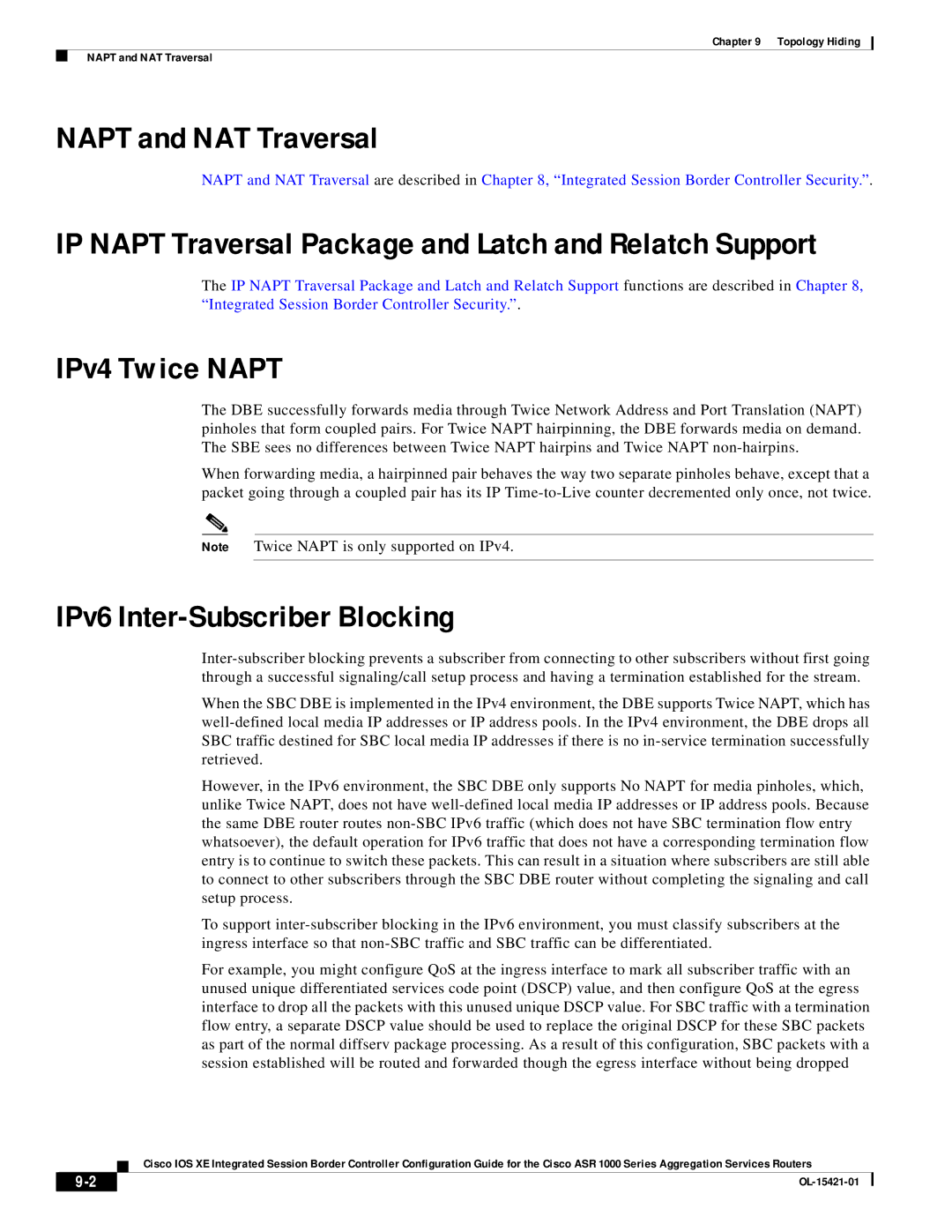
Chapter 9 Topology Hiding
NAPT and NAT Traversal
NAPT and NAT Traversal
NAPT and NAT Traversal are described in Chapter 8, “Integrated Session Border Controller Security.”.
IP NAPT Traversal Package and Latch and Relatch Support
The IP NAPT Traversal Package and Latch and Relatch Support functions are described in Chapter 8, “Integrated Session Border Controller Security.”.
IPv4 Twice NAPT
The DBE successfully forwards media through Twice Network Address and Port Translation (NAPT) pinholes that form coupled pairs. For Twice NAPT hairpinning, the DBE forwards media on demand. The SBE sees no differences between Twice NAPT hairpins and Twice NAPT
When forwarding media, a hairpinned pair behaves the way two separate pinholes behave, except that a packet going through a coupled pair has its IP
Note Twice NAPT is only supported on IPv4.
IPv6 Inter-Subscriber Blocking
When the SBC DBE is implemented in the IPv4 environment, the DBE supports Twice NAPT, which has
However, in the IPv6 environment, the SBC DBE only supports No NAPT for media pinholes, which, unlike Twice NAPT, does not have
To support
For example, you might configure QoS at the ingress interface to mark all subscriber traffic with an unused unique differentiated services code point (DSCP) value, and then configure QoS at the egress interface to drop all the packets with this unused unique DSCP value. For SBC traffic with a termination flow entry, a separate DSCP value should be used to replace the original DSCP for these SBC packets as part of the normal diffserv package processing. As a result of this configuration, SBC packets with a session established will be routed and forwarded though the egress interface without being dropped
Cisco IOS XE Integrated Session Border Controller Configuration Guide for the Cisco ASR 1000 Series Aggregation Services Routers
| ||
|
